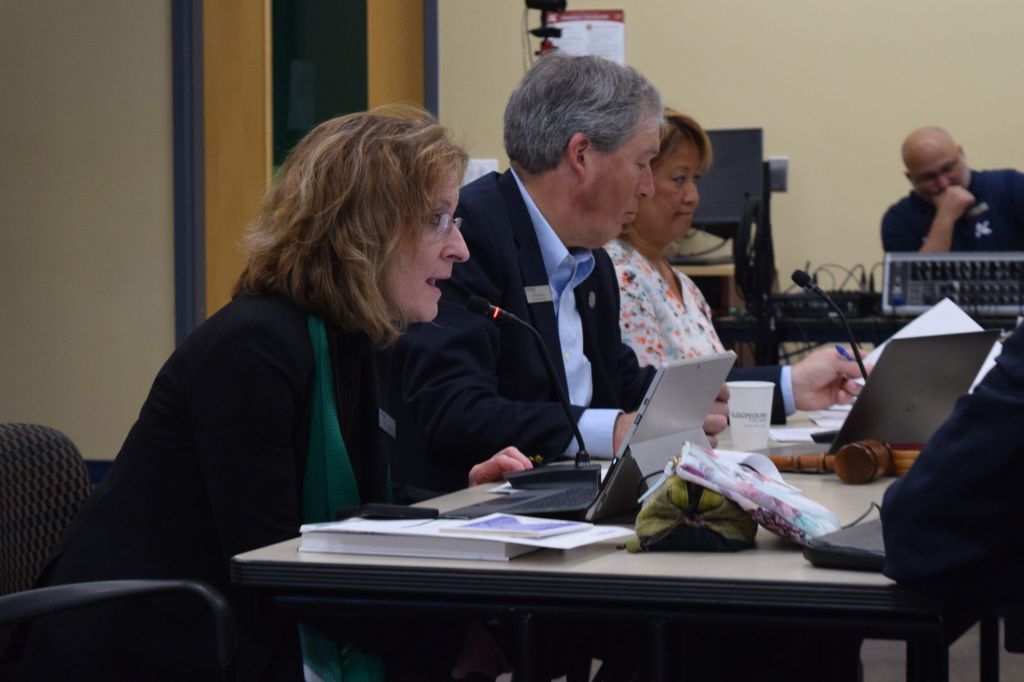International students may have a tuition increase of up to 16 per cent as the college looks to respond to Doug Ford’s domestic tuition cuts, the Board of Governors heard at a meeting on Feb. 25.
While domestic students can look forward to receiving a 10 per cent tuition break going into next fall, international students can expect their tuition costs to increase significantly.
College administration had planned on increasing tuition fees by three per cent going into the 2019-2020 school year, but given provincial government actions, the school will be experiencing a 13 per cent loss in expected revenue.
President Cheryl Jensen brought attention to the proposal at the Board of Governors meeting. In order to offset revenue loss, the college is having to increase international fees by six to 16 per cent, depending on the program of study.
To put this increase into a clearer context, the fees for the business accounting program costed international students $7,339.62 in total for the fall 2018 semester. To take this range of between six and 16 per cent and apply it to this program specifically, the increase for 2019-2020 fees could be as low as $440.37 and as high as $1174.33.
“The advantages that we have right now are in international tuition and international enrolment,” Jensen said. “At the bureaucratic level, they are well aware of the challenges that this may place on students. As we speak now we are looking at plans at how we can provide assistance to our students.”
Jensen also said that she is working to make things fair for those students who have benefited from the net-free tuition program in the past. She hopes that steps can be made so these students can be grandfathered through the rest of their education with the former offer in place.
Krista Pearson, school registrar, spoke about how the college has already experienced an increase in OSAP applications for 2019-2020.
“We have tools available to support students,” Pearson told the board. “And we’ve already made a commitment internally to be very pro-active in articulating for students’ level of affordability as well as available resources.”
2019-2020 budget approved despite last-minute adjustments
While the recent changes to tuition laws were of great significance to the board meeting, the main scheduled topic for Feb. 25 was the proposed budget for 2019-2020 academic year.
Grant Perry, acting manager for financial services, announced to the board during a presentation that the forecast for next years’ net contribution would be $1.2 million after expenditures, from a projected total revenue of $412 million.
Peter Nadeau, chair of the board, thanked Perry for his ability to work on the budget flexibly given the government changes, saying “It’s been a bit of a moving target.”
Perry also announced that the college will need to dig into its internally restricted funds next year, with roughly $1.5 million of these funds to go into the proposed Athletic and Recreation Complex.
The board unanimously approved the budget for next year, while Perry also drew attention to the $35 million estimate for the new student information system that is set to be established some time from 2020-2022.
During the course of the presentation to the board, Perry also announced the revenue figures from the third quarter of 2018-2019. The college experienced a net contribution of $4.8 million, mainly due to an increase in international enrolment.
Workday update suggests system is fully back on track
In other business, an update was presented to the board about the encouraging results from the school’s new employee pay-system, Workday.
Despite concerns about a phishing attack to the system in January, Cheryl Jensen assured board members that security is not in any doubt.
“We have been communicating with the individuals who have clicked on the survey and given their name and password. We’ve been working very diligently with them to have their computers cleaned.”
Doug Wotherspoon, vice president of innovation and strategy, announced to the board that the system has been accessed by over 1,800 employees for online training purposes with a customer satisfaction rating of 4/5.
“Workday has worked exactly as advertised, (and) as configured,” Wotherspoon said.
2019-2021 business plan unveiled, solar photovoltaic project update
The main highlights of the multi-faceted 2019-2021 business plan are the increase in co-op student spots from 2,000 to 2,600, as well as the college adopting a 14-week model with a week off in each term.
The board also discussed the college’s funding options with the ongoing solar photo-voltaic project, as the previous budget for its completion still requires $1.2 million.
The project was started in 2018 to receive provincial government funding, but the deadline for the project is March 31, 2019. By changing the heating solution on campus, the goal is to achieve a targeted reduction in greenhouse gas emissions.


